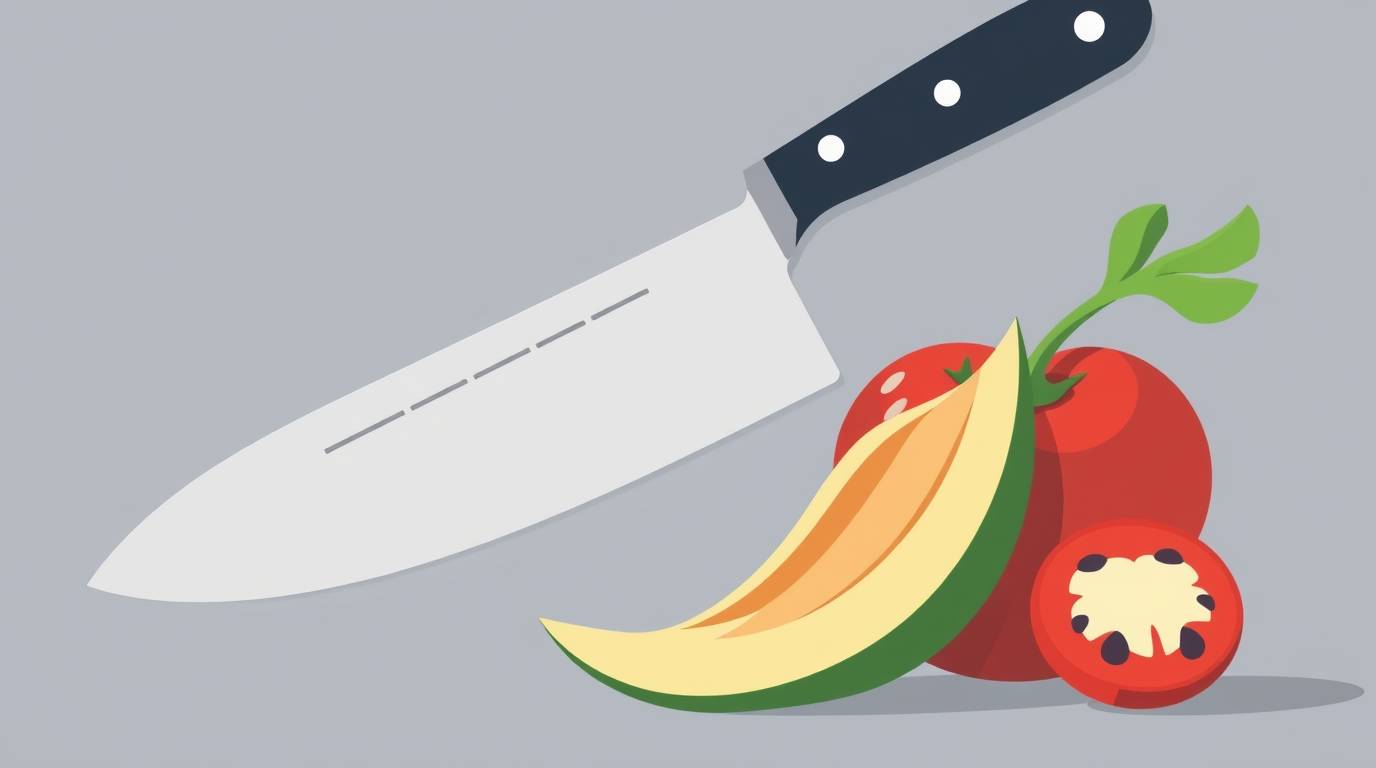Understanding recipe characteristics is essential for becoming a more confident and versatile cook. From cooking methods and ingredient ratios to flavor profiles and dietary classifications, recipe types tell you much more than just what you'll be eating. This comprehensive guide will help you recognize different recipe characteristics, understand what makes them unique, and learn when to use specific types for better meal planning and cooking results.
Table of Contents
Cooking Method Classifications
One of the most fundamental ways to categorize recipes is by the primary cooking method they employ. Understanding these methods helps you predict texture, flavor development, and equipment requirements.
Moist Heat Cooking Methods
Moist heat cooking uses water, broth, steam, or other liquids to transfer heat to food. These methods typically produce tender results and help preserve nutrients.
- Boiling: Cooking food in liquid at 212°F (100°C), characterized by large, rapid bubbles
- Simmering: Cooking food in liquid at 185-205°F (85-96°C), with smaller bubbles
- Poaching: Gentle cooking in liquid at 160-180°F (71-82°C), with no visible bubbling
- Steaming: Cooking food with hot vapor from boiling water
- Braising: Partially submerging food in liquid and cooking slowly, often after an initial sear
Tip
Moist heat methods are excellent for tough cuts of meat containing collagen, which breaks down into gelatin during long, slow cooking. They're also ideal for delicate foods like fish and eggs where gentle cooking prevents toughening.
Dry Heat Cooking Methods
Dry heat methods cook food using air, fat, radiation, or direct contact with a hot surface. These techniques often produce browned exteriors through caramelization and Maillard reactions.
- Baking: Cooking food surrounded by hot, dry air in an oven
- Roasting: Similar to baking but typically at higher temperatures, often for meats and vegetables
- Broiling/Grilling: Cooking food with high heat from above (broiling) or below (grilling)
- Sautéing: Quickly cooking food in a small amount of fat in a pan
- Pan-frying: Cooking food in a moderate amount of fat, with more contact with the pan surface
- Deep-frying: Submerging food in hot oil or fat
Combination Cooking Methods
These techniques use both moist and dry heat, often starting with one and finishing with another.
- Braising: Initially searing meat (dry heat), then slowly cooking in liquid (moist heat)
- Stewing: Similar to braising but with the food cut into smaller pieces and fully submerged
- Steam-baking: Adding moisture to the oven environment during baking
- Pot-roasting: Roasting in a covered container to retain moisture
Key Takeaway
Recognizing a recipe's primary cooking method helps you understand not only the equipment and techniques required but also what transformations will occur to your ingredients. Dry heat methods generally create more concentrated flavors and textural contrasts, while moist heat methods yield more tender, uniformly cooked results.
Meal Types and Courses
Recipes are commonly categorized based on when and how they're typically served within the structure of meals.
Breakfast Recipes
Breakfast recipes often feature specific ingredient combinations and preparation styles:
- Quick-starting options: Smoothies, overnight oats, grab-and-go items
- Egg-based dishes: Omelets, frittatas, eggs Benedict
- Griddle classics: Pancakes, waffles, French toast
- Breakfast baked goods: Muffins, scones, quick breads
- Morning proteins: Breakfast sausage, bacon, smoked salmon
What distinguishes breakfast recipes isn't just when they're eaten but often their nutritional composition, with many focusing on providing energy for the day ahead.
Lunch Recipes
Lunch recipes typically balance practicality with satisfaction:
- Portable options: Wraps, sandwiches, bento boxes
- Make-ahead meals: Grain bowls, pasta salads, lunch prep containers
- Quick-assembly dishes: Composed salads, soup and sandwich combinations
- Leftovers reimagined: Planned extras from dinner repurposed
Dinner Recipes
Dinner recipes often represent the most substantial and varied meal of the day:
- One-pot meals: Stews, casseroles, sheet pan dinners
- Protein-centered plates: Meat/fish/protein main with sides
- Family-style dishes: Lasagna, roasts, large format meals
- Weeknight quick meals: 30-minute recipes, simple preparations
- Weekend projects: More complex, time-intensive recipes
Appetizers and Starters
These recipes are designed to stimulate the appetite without being too filling:
- Finger foods: Small bites eaten without utensils
- Dips and spreads: Served with breads, crackers, or crudités
- Small plates: Tapas-style dishes meant for sharing
- Amuse-bouche: Single-bite chef's offerings to open a meal
- First courses: Small plated dishes to begin a formal meal
Side Dishes
Sides complement and balance main dishes:
- Vegetable sides: Roasted, sautéed, or raw vegetable preparations
- Starchy sides: Potatoes, rice, pasta, and other grains
- Bread accompaniments: Rolls, cornbread, flatbreads
- Salads: Green salads, grain salads, vegetable salads
Desserts and Sweets
Sweet endings to meals include:
- Baked desserts: Cakes, pies, cookies, pastries
- Frozen treats: Ice cream, sorbet, frozen yogurt
- Custards and puddings: Crème brûlée, bread pudding, panna cotta
- Fruit-based desserts: Cobblers, crisps, poached fruits
- Confections: Chocolates, candies, petit fours
Dish Origins and Cultural Classifications
Recipes are often categorized by their cultural origins, which can tell you a lot about ingredient combinations, flavor profiles, and cooking techniques.
Regional Cuisine Characteristics
Different regions have distinctive culinary signatures:
- Mediterranean: Olive oil, tomatoes, herbs, seafood, legumes
- East Asian: Rice, soy sauce, ginger, garlic, fermented ingredients
- South Asian: Complex spice blends, yogurt, ghee, legumes
- Latin American: Chiles, corn, beans, citrus, herbs
- Middle Eastern: Olive oil, yogurt, flatbreads, lamb, aromatic spices
- African: Stews, grains, peanuts, yams, robust spices
- European: Butter, cream, wheat, root vegetables, wine
Tip
When exploring a new cuisine, look for its foundational flavor components, cooking techniques, and ingredient combinations rather than just individual recipes. Understanding these elements allows you to improvise and adapt with authenticity.
Fusion Cuisine
Fusion recipes deliberately blend elements from multiple culinary traditions:
- Classical fusion: Historical culinary intersections (e.g., Peruvian Nikkei combining Japanese and Peruvian)
- Contemporary fusion: Modern chef-driven combinations (e.g., Korean-Mexican tacos)
- Ingredient-driven fusion: Using techniques from one cuisine with ingredients from another
- Technique-driven fusion: Applying methods from one tradition to another's ingredients
For a detailed exploration of successful fusion approaches, check out our article on Italian-inspired St. Patrick's Day recipes.
Dietary and Nutritional Classifications
Recipes are increasingly categorized by dietary preferences and requirements.
Vegetarian and Vegan Recipes
Plant-based recipe categories include:
- Vegetarian: No meat but may include eggs and dairy
- Vegan: No animal products whatsoever
- Plant-forward: Emphasizing vegetables but may include small amounts of animal products
- Flexitarian: Primarily plant-based with occasional meat
Gluten-Free, Dairy-Free, and Allergen-Conscious Recipes
These recipes address specific dietary restrictions:
- Gluten-free: No wheat, barley, rye, or their derivatives
- Dairy-free: No milk products
- Top allergen-free: Avoiding the most common allergens: milk, eggs, peanuts, tree nuts, fish, shellfish, wheat, and soy
- FODMAP-friendly: Limiting fermentable carbohydrates that can cause digestive issues
Warning
When cooking for someone with food allergies, always verify all ingredients, including hidden sources of allergens in packaged products. Cross-contamination is a serious concern, so use separate preparation surfaces and utensils.
Health-Focused Recipe Types
These recipes target specific nutrition goals:
- Low-carb: Limiting carbohydrates, often emphasizing proteins and fats
- Ketogenic: Very low carb, high fat to promote ketosis
- High-protein: Emphasizing protein content for muscle building or satiety
- Low-sodium: Reducing salt content for heart and blood pressure health
Preparation Complexity and Time Requirements
Understanding a recipe's time and skill demands helps you plan appropriately:
Quick and Easy Recipes
- 30 minutes or less total time
- Minimal ingredients (usually under 10)
- Simple techniques requiring basic kitchen skills
Special Occasion Recipes
- Multiple components or complex techniques
- Longer preparation and cooking times
- Often yield impressive, showstopping results
Ingredient Composition and Ratios
The balance of ingredients defines many recipe types:
- Protein-forward: Meat, fish, or plant protein as the focal point
- Grain-based: Centered on rice, pasta, or other grains
- Vegetable-centric: Vegetables as the main component rather than side
Flavor Profile Classifications
Recipes can be categorized by their dominant flavor characteristics:
The Five Basic Tastes
- Sweet: Desserts, glazed dishes, many breakfast items
- Salty: Snacks, preserved foods, many savory dishes
- Sour: Pickled items, dishes with vinegar or citrus
- Bitter: Coffee, dark chocolate, some greens
- Umami: Mushrooms, aged cheeses, fermented foods
Key Takeaway
Exceptional recipes often balance multiple taste elements rather than focusing on just one. Understanding flavor profiles helps you adjust seasoning and identify what might be missing in a dish that seems flat.
Using Recipe Characteristics for Better Meal Planning
Recognizing recipe types helps with effective meal planning:
- Match cooking methods to your available time (quick sauté vs. slow braise)
- Balance your week with varied protein sources and cooking techniques
- Plan complementary side dishes based on the main dish's characteristics
- Identify make-ahead components for efficient batch cooking
Try Flavoreer's recipe generator to find recipes that match your specific preferences and constraints.
Conclusion
Understanding recipe characteristics goes beyond just following instructions—it empowers you to:
- Anticipate results before you start cooking
- Substitute ingredients more confidently
- Create balanced meal plans that satisfy nutritional and taste preferences
- Adapt techniques to your equipment and skill level
By recognizing these patterns in recipes, you'll develop a more intuitive understanding of cooking, allowing you to cook more creatively and confidently in your kitchen.
Looking for more help with special diets? Check out our related articles:



